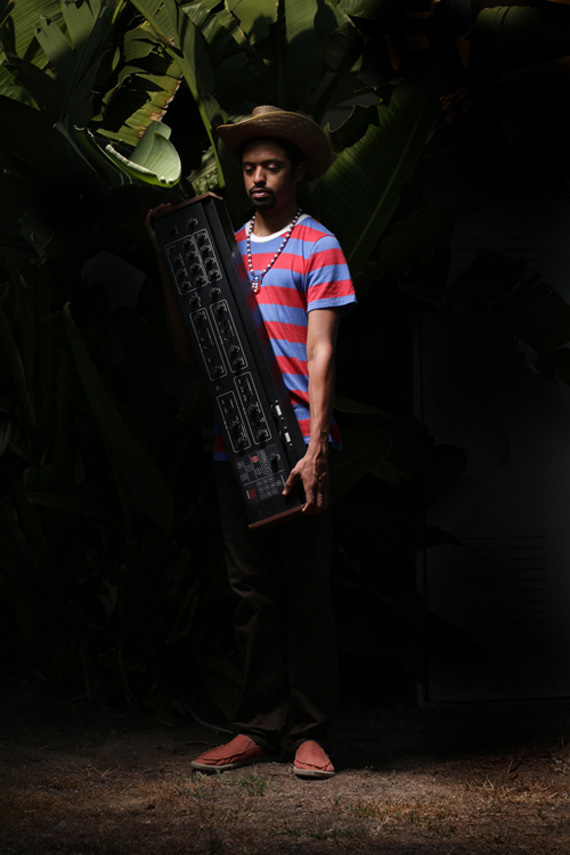We just announced an Latin standards album by Frankie Reyes called Boleros Valses y Mas. Reyes is the alias of Gabriel Reyes-Whittaker who also records as GB / Gifted & Blessed. We talked to him the other day about the project.
How did the idea come about to make this record?
Frankie Reyes: The initial idea to cover these compositions came from an invitation from Dublab to participate in one of their annual fundraisers, which was themed specifically around Latin American modernism. I thought about how I might capture the essence of this theme using my instrument of choice, the synthesizer. What came to mind was to cover some of the classic Latin American compositions that I grew up hearing around me and have grown to love as I've gotten older, most of them in the bolero style but a few in the waltz, son, and even mariachi style.
What is your relationship to the songs, the connection?
I grew up hearing many of these pieces of music around me, but I didn't necessarily hear them in my household. Most of this music is of my grandparents' generation. They came to the states from Puerto Rico. Still, most of this music has been around me for as long as I can remember in some form or fashion. A lot of it is popular music you might hear in your favorite Mexican restaurants or while visiting any of Los Angeles' predominantly Latino neighborhoods. And in my travels in Latin America, I always meet people who know and love this music still. Having specifically chosen compositions from many different parts of Latin America, I am hoping to touch on a broad Latino experience unified through these classic song forms that were at one time the popular music of the day. Many of these compositions are still often covered by Latin pop artists.
All of these songs are old standards, most of them from the middle part
of the 20th century. The newest of them was written in the 1960s. Most
of these songs have lyrics and were intended to be sung and sometimes
played on guitar, piano or with full band or orchestra. If you go back
and listen to versions of these pieces that have lyrics, the words are
often very beautiful and poetic, but interpreting them for synthesizer
re-contextualizes them so the emphasis is just on the melodic, harmonic
and rhythmic aspects rather than on the lyrical content.
What did you use to preform these tracks?
I made these tunes using a combination of a few different processes, including audio-to-MIDI and sheet music-to-MIDI processing. I also based a lot of the music on other people's piano transcriptions that I studied and replicated via MIDI, then played through an Oberheim synthesizer. I am not a proficient pianist, so with MIDI being my main compositional tool, I went in and did a lot of rearranging and note placement visually rather than actually playing.
How does this fit in, or not fit in, from other styles of music you are doing as Gifted & Blessed?
This record is different from anything I've done up to this point, but my Frankie Reyes moniker has been used for other recordings that bridge my Puerto Rican roots with modern electronics. I call this lane "technoindigenous studies," and for me this record fits with that concept. For those that know my other beat- or dancefloor-oriented sounds, this record may come as a surprise. Sonically, it might fit most closely with the ambient recordings I've done like my Emotional Topography tape I did with Leaving Records earlier this year, but only to the extent that I am using just one solo synthesizer throughout the record.
On the web: Frankie Reyes | Gifted & Blessed | @giftedblessed


